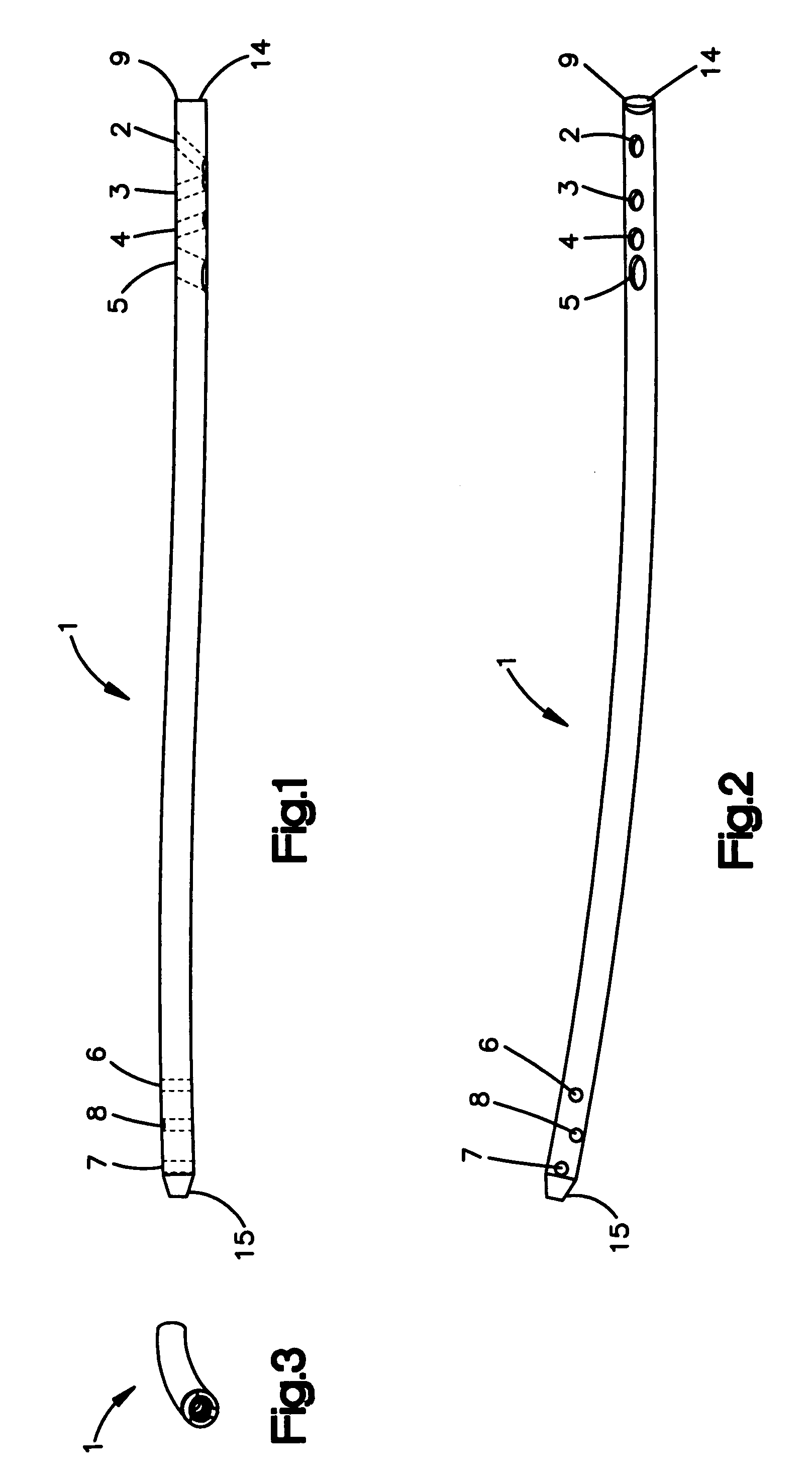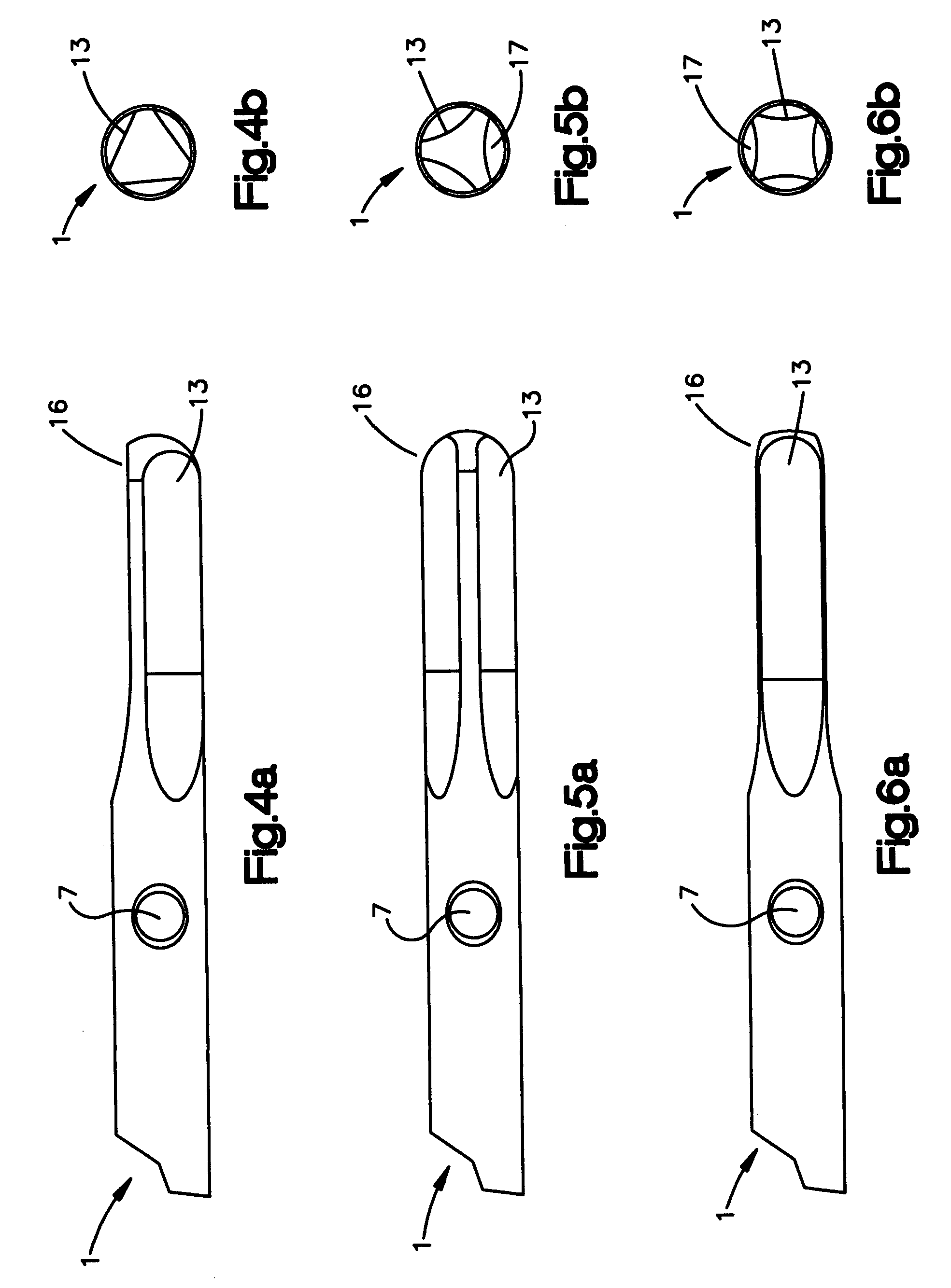Intramedullary pin for insertion into the medullary space of a femur
a technology of intramedullary pins and femurs, which is applied in the field of intramedullary pins for insertion into the medullary space of femurs, can solve the problems of irritating the surrounding tissue, using pure helical geometry in varying anatomy of bones, and undesired change in the height of the locking position, so as to prevent the surrounding tissue from being irritated
- Summary
- Abstract
- Description
- Claims
- Application Information
AI Technical Summary
Benefits of technology
Problems solved by technology
Method used
Image
Examples
Embodiment Construction
[0031]FIGS. 1-3 depict an intramedullary pin 1 in three views. The intramedullary pin 1 has a proximal end 14 and a distal end 15. The shaft of the pin 1 is generally cylindrical in shape. The proximal end 14 may be curved in a lateral-posterior direction, while the distal end 15 may be straight or at least partly straight. Proximal and distal end planes of the pin may be rotated about 60°-110°, preferably 70°-90° and in particular 80° relative to one another. In one embodiment, the radius is between about 300-1300 mm, preferably about 900-1200 mm and in particular about 1100 mm. The length of the proximal radius corresponds to the lateral contact surface with the cortex which is about 300-1000 mm, preferably about 600-800 mm, and in particular 700 mm.
[0032]The length of the distal straight section may correspond to the depth to which the distal pin end penetrates into the distal spongiosa structure. The length may be about 35-70 mm, preferably about 40-60 mm, and in particular abou...
PUM
 Login to View More
Login to View More Abstract
Description
Claims
Application Information
 Login to View More
Login to View More - R&D
- Intellectual Property
- Life Sciences
- Materials
- Tech Scout
- Unparalleled Data Quality
- Higher Quality Content
- 60% Fewer Hallucinations
Browse by: Latest US Patents, China's latest patents, Technical Efficacy Thesaurus, Application Domain, Technology Topic, Popular Technical Reports.
© 2025 PatSnap. All rights reserved.Legal|Privacy policy|Modern Slavery Act Transparency Statement|Sitemap|About US| Contact US: help@patsnap.com



